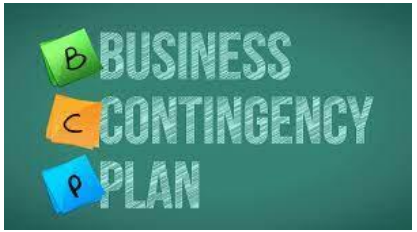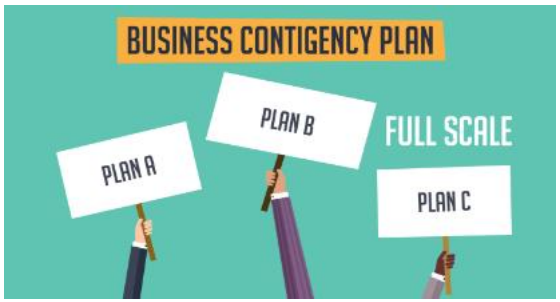
Business Contingency Plan
-
A Business Contingency
Plan is a course of action
that your organization
would take if an
unexpected event or
situation occurs.
-
Sometimes a contingency
can be positive—such as a
surprise influx of money—
but most often, the term
refers to an adverse event
that affects an
organization’s reputation,
financial health, or ability
to stay in business.
-
Examples of adverse
events include fire, flood,
data breach, and a major
IT network failure.
-
Contingency plans are an important part of the overall
business continuity strategy because they help ensure the
organization is ready for anything.
-
Contingency planning is a proactive strategy, whereas crisis
management—the other piece of the business continuity
puzzle—is more of a reactive strategy.
-
A contingency plan helps to ensure you are prepared for
what may come; a crisis management plan empowers you to
manage the response after the incident occurs.
-
Identify /
Prioritize Your
Resources
- First, do a little research throughout the organization to
identify and prioritize the resources that the
organization cannot do without, such as employees, IT
systems,&specific facilities and assets.
-
Pinpoint the
key risks
- Next, identify the potential threats to these critical
resources. Meet with employees, executives, IT, and
other key personnel to gain a holistic idea of the events
that could impact your resources
-
Draft your
contingency
plans
- Ideally, you would then write out a contingency plan for each of
the identified risks. However, it’s best to start with the highest�priority threats—usually those that are most likely to occur and
would have the most significant impact. Then, over time you can
work toward drafting plans for each lower-priorityrisk.
-
Distribute your
plans
- Once each plan is completed and approved, ensure that
every employee and stakeholder has easy access to it.
Think of providing access to the latest contingency plans
directly to each employee on his or her mobile
-
Maintain each
plan
- Be sure to keep each plan updated as your organization
goes through changes, such as hiring, adoption of new
technologies. In addition, rehearse implementation with
stakeholders regularly.


